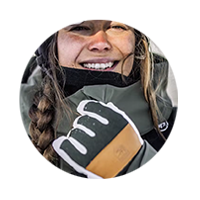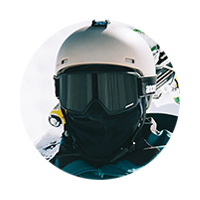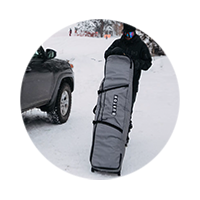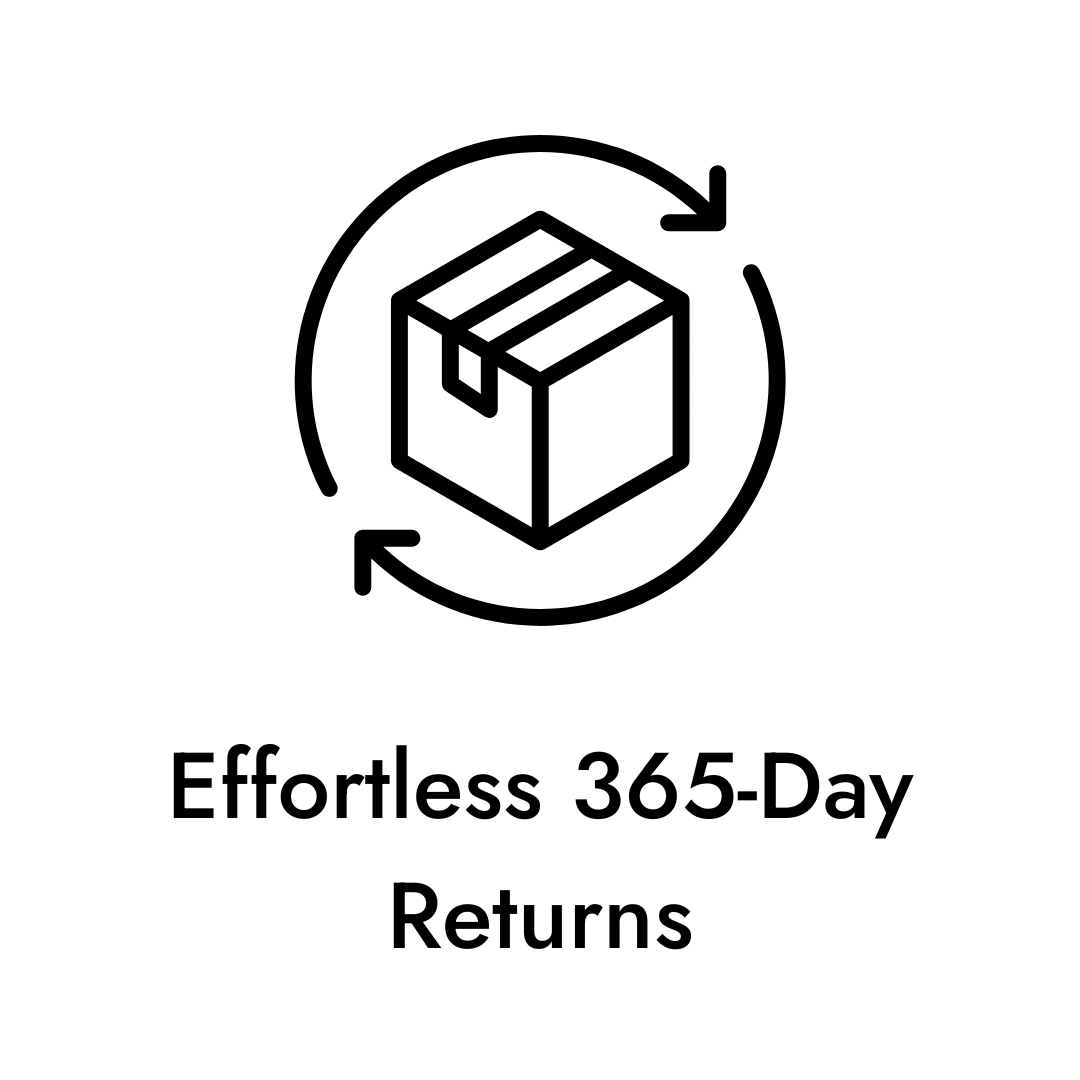ABILITY LEVEL
Whether you’re a beginner looking for your first ski or professional looking for your next comp there will be a ski to suit. Ski width, rocker and concave size affect the skill level of a ski. It is important to assess your skill to find the ski to best match your ability level.
SKI SIZE
SKI SHAPES
The shape of a waterski plays a huge role in how a ski handles on top of the water, and the ability level the ski is designed for. There are several general ski shapes
SLALOM COURSE SKIS

CROSSOVER SKIS
Crossover skis are for skiers who want optimal performance, but something a little more forgiving on the river. Having a bery similar profile to a course ski, but having a slightly wider body make crossover skis ideal for running in the course at lower speeds, and having a bit more stability for a skier who wants to turn hard, but then have a bit of a rest afterward

WIDEBODY SKIS
Widebody skis are exactly as the name states, a ski that is wide throught the body. Having a wider centre section they are much easier out of the deep, making deep starts much easier for heavier people, older guys or learners who have never been on a single before. They will also accomodate some of their turning ability for stability; perfect for people who ski in rough waters frequently, or for skiiers who just want some to cruise.

FREESKIS
Growing massively in populatity over recent years is free skis. While mostly limited to shapes such as the Radar Delerium or Fluid Flight; freeskis will have a much shorter length, while being much wider through the body. This allows the ski to pop off the wake, and have a much lower swing weight making it easier to maneuver in the air.
COMBO/TRAINER SKIS
Generally much cheaper and of a more basic construction. Combo skier, also known as trainer skis, are perfect for people who have never been on the water before. Made to be much wider, and designed for stability, combo skis are for those who have never been on a ski before but want to work towards getting up on a single

STIFFNESS
The stiffness of a ski affects how much a ski will flex in the water, affecting its overall ride. As a ski gets stiffer, it allows the skier to put more force on it, generating more speed and getting more performance out of the ski. Stiffer skis are often used on the course at higher speeds so the skier can get as much speed as possible as they exit the turn and shoot towards the next bouy. However, a stiffer ski is also less forgiving, and can be difficult to ride in rough water.
A softer ski is not as fast through the water and will flex more meaning a skier won't be able to get as much speed out of it, but it will make the ski much more forgiving and easier to ride in rougher water, making it more suited to beginners and people who just want to cruise.
Since the stiffness of a ski massively depends on the conditions it is being used in, it is important to consider this when making a decision on what ski is best suited for you.
WATER CONDITIONS
The water you ski in plays a big factor in choosing the right waterski for you. While you can ride any ski in any weather conditions, some skis will perform much better in specific conditions.
If you find yourself skiing in glassy water, on the course, on a private lake or early in the morning before anyone else is on the river, then pretty much any ski will handle fine, however these are the only conditions that a stiff course ski should be used in.
BOAT SPEED
Slalom water skis are designed to be skied in a defined range. This is because the speed we ski at dictates how deep the ski sits in the water. At slower boat speeds, skis need more surface area to allow the ski to stay on top of the water. Skier speed closely corresponds to skier type (Competition skiers ski faster where Novice Skiers ski slower). We use Skier Speed because sometimes you may ski faster or slower than your perceived Skier Type and need a ski that will work best for you. Many boat speedometers are very inaccurate. If you are not skiing with Zero Off or Perfect Pass, we recommend using a GPS or a smart phone with a speedometer application to verify your true skiing speed. Boat speedometers are frequently 2-4 mph off
36 MPH
This is the speed that high level water ski competitions are pulled at. This is the fastest a boat should ever go pulling a slalom skier. This is an intense ride and only competitive skiers should go this fast.
34 MPH +
34 MPH is the speed that many Advanced and a majority of Competition water skiers are pulled at. Many skiers who ski at this speed will prefer a stiffer ski that is designed to handle the load that will be applied in a turn. A stiffer ski will "spring" back and exit a turn with more speed.
31-33 MPH
This is the speed range many recreational skiers use. Since they are not competing and may not have cruise control on their boat they ski at what feels comfortable or what their driver gives them! At these speeds, the water does not put as much upward force on a ski. Frequently skis designed for this speed will start to use slightly wider ski. These skis are typically not considered a "wide-body construction". They are only .2" to .4" wider than a competition ski but frequently are still very stiff. The width makes the ski sit on top of the water as it is designed and makes skiing less fatiguing (because the skier is not pushing as much water) and added stiffness equates to added acceleration out of turns.
28-31 MPH
This speed is typical of Intermediate Skiers. Skis designed for this speed are .5" to .7" wider than a traditional competition ski. We start to see these skis classified as "Wide-Body". The extra width not only makes the ski stay on top of the water at the appropriate height, but also makes the ski more stable. Most 29-31 MPH water skis are designed to be able to take a break and go straight down the lake where some more aggressive skis are edge seeking and always want to turn. Skis designed for these speeds and skiers are also more forgiving and have a slower edge-to-edge movement that promotes confidence and stability.
30 MPH and Under
Many Novice skiers will ski under 30 MPH. Skiers of this speed like the slower feel and when they speed up feel like things are moving too quickly. Most of the skis in this category are considered "wide-body". These are the widest skis on the market and are designed as "cruisers". Skiers at this speed move from edge to edge more slowly and want the stability and the reduced fatigue that wider skis provide. The wide-body water ski designs also make deep water starts easier. Think of them as larger airplane wings. If you have a more ski in the water, there is more lift.








